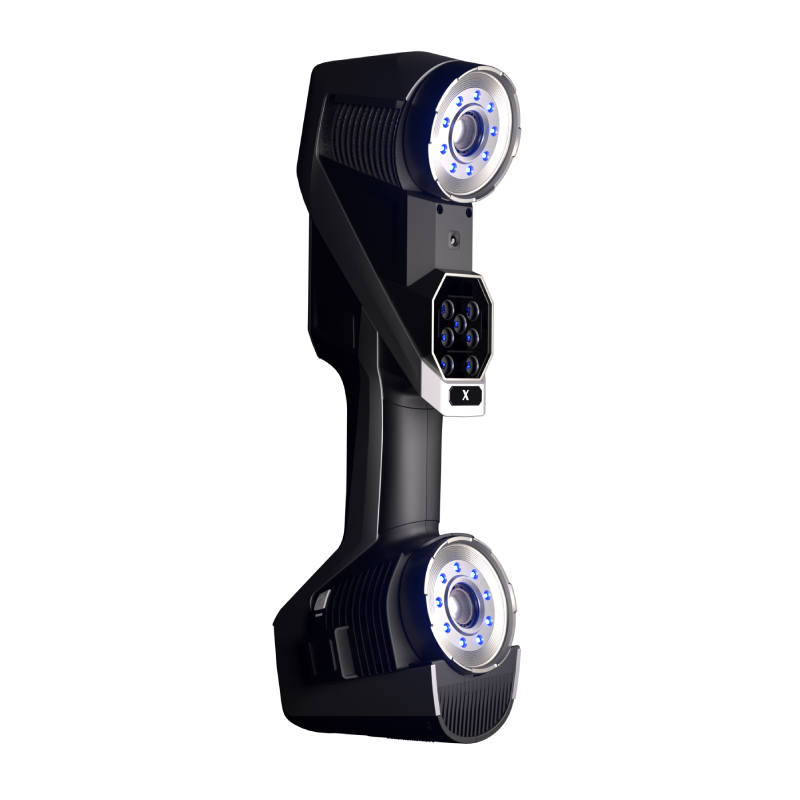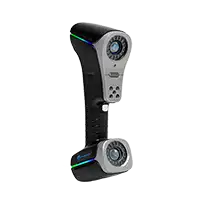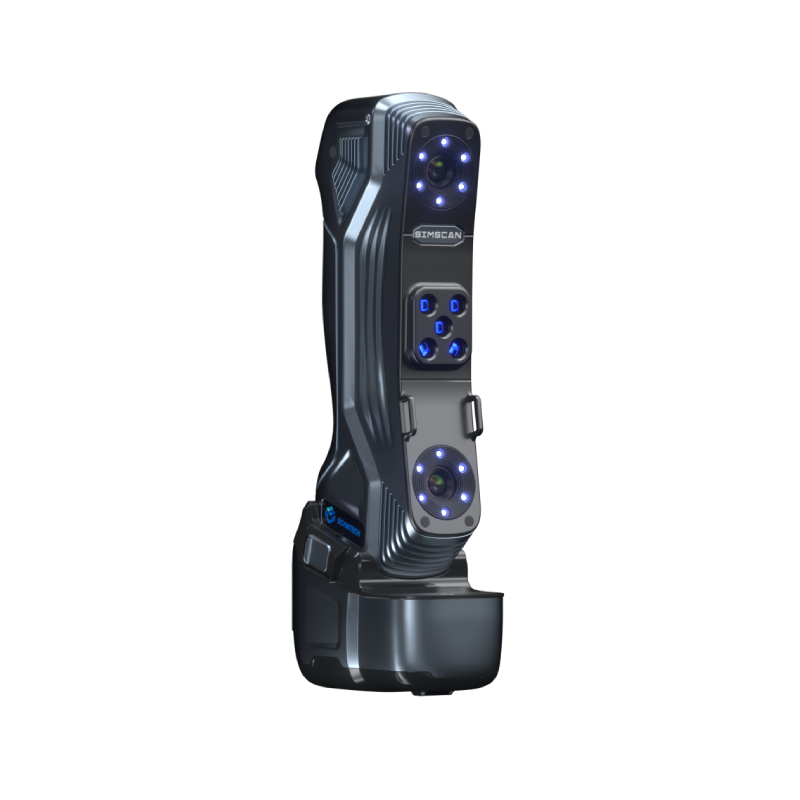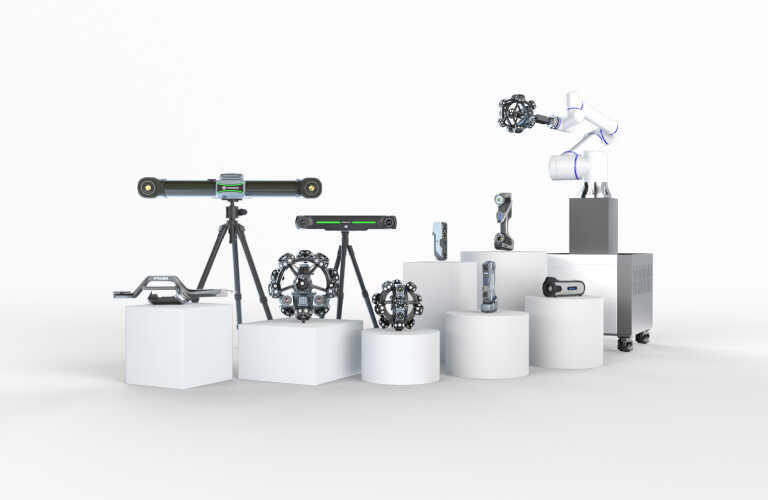How Accurate is a Handheld 3D Scanner?
05 May, 2025
In the realm of digital technology and precision measurement, handheld 3D scanners have risen in prominence. With the advent of these devices, the world of high-resolution digital capturing has become more accessible than ever. Their popularity is owed to their portability, convenience, and the versatility they offer across numerous industries. From engineering to art restoration, the applications of these scanners are vast. However, a fundamental question persists: This article aims to delve into this query, exploring the intricacies and capabilities of these devices.
Overview of Handheld 3D Scanners' Popularity
Handheld 3D scanners have revolutionized how professionals approach 3D modeling and measurement tasks. Unlike traditional, stationary scanners, these portable devices allow users to capture data in various environments, from confined spaces to large open areas. This flexibility is one of the key factors driving their widespread adoption. Whether it's capturing the intricate details of a historical artifact or assessing the dimensions of industrial components, the mobility and ease of use offered by handheld 3D scanners are unmatched.
Brief Explanation of Portability and Convenience
The portability of handheld 3D scanners is a significant advantage. It enables users to take the technology to the object being scanned rather than transporting the object to the scanner. This is especially beneficial in industries like construction, where transporting large objects is impractical. Additionally, the lightweight and ergonomic designs of modern handheld scanners make them user-friendly, ensuring that both seasoned professionals and beginners can operate them effectively. However, the question of their accuracy remains a critical consideration for potential users.
Defining 3D Scanning Metrics: Accuracy, Precision, Resolution
To understand the accuracy of a handheld 3D scanner, it is essential first to grasp the key metrics that define 3D scanning: accuracy, precision, and resolution. Each of these terms plays a distinct role in determining the quality of a scan.
Explanation of Accuracy, Precision, and Resolution
Accuracy refers to how closely a scanner's captured data aligns with the true dimensions of an object. The greater the accuracy, the more reliable the scanned data is for applications that require exact measurements. Precision, on the other hand, deals with the consistency of the measurements taken. A scanner can be precise by delivering consistent results across multiple scans, even if those measurements are not entirely accurate. Resolution relates to the level of detail captured by the scanner, measured by the number of data points it generates.
Importance of Each Metric in Scanning Applications
Each of these metrics serves a different purpose depending on the application. For instance, precision is critical in quality control processes in manufacturing, where consistent measurements are required to ensure product standards. Resolution is vital for tasks that demand detailed representations, such as CGI modeling or digital archiving of historical artifacts. Understanding the interplay between accuracy, precision, and resolution is crucial for selecting the right handheld 3D scanner for a specific task.
Measuring 3D Scanning Accuracy
When considering the accuracy of a handheld 3D scanner, it's important to evaluate both single-scan and volumetric accuracy. These measurements provide insights into how well the scanner performs under various conditions.
Differences Between Single-scan and Volumetric Accuracy
Single-scan accuracy refers to the scanner's ability to capture the dimensions of an object in one pass. This metric is often specified by manufacturers and is a good indicator of the scanner's performance in ideal conditions. Volumetric accuracy, however, considers the cumulative accuracy of multiple scans combined to form a complete 3D model. This measurement is crucial for understanding how well the scanner performs in capturing larger objects that require stitching multiple scans together.
Challenges in Ensuring Consistent Accuracy Across Different Conditions
Achieving consistent accuracy with a handheld 3D scanner can be challenging due to factors such as user technique, environmental conditions, and the complexity of the object being scanned. Variations in lighting, temperature, and surface texture can all impact the accuracy of a scan. Therefore, it is essential to optimize these conditions and practice proper scanning techniques to ensure reliable results.
Precision in 3D Scanning: Achieving Consistency
Precision is a cornerstone of effective 3D scanning, playing a pivotal role in determining the scanner's reliability and consistency.
Definition of Precision in the Context of 3D Scanning
In 3D scanning, precision is all about capture consistency. It assesses how well a scanner can reproduce the same result under the same conditions. High precision means that repeated scans of the same object yield identical results, which is crucial for applications requiring strict adherence to specifications.
Importance of Repeatability and User/Environment Conditions
Repeatability is a critical aspect of precision, indicating the scanner's ability to consistently capture data without deviation. External conditions, such as temperature fluctuations and vibrations, can affect repeatability. User skill is also a factor, as the steadiness of the scanner's movement and the angle at which data is captured can influence precision. Therefore, creating a controlled scanning environment and honing user skills are essential for achieving high precision.
Understanding Resolution in 3D Scans
Resolution is another vital metric that affects the quality and detail of 3D scans.
How Resolution Impacts the Detail in 3D Models
Resolution determines the level of detail captured in a 3D model, with higher resolutions producing more intricate and detailed scans. This is particularly important for applications requiring detailed representations, such as digital art, animation, and forensic analysis.
Various Types of Resolution: Mesh, 3D Space, Single-frame
Different types of resolution metrics should be considered when evaluating a 3D scanner. Mesh resolution concerns the size and number of triangles that form the 3D model, with smaller triangles providing finer detail. 3D space resolution measures point density within a given area, influencing the model's overall detail level. Single-frame resolution relates to the density of points captured in each frame, impacting the clarity and detail of individual scans.
Differentiating Accuracy, Precision, and Resolution
A common source of confusion in 3D scanning is the relationship between accuracy, precision, and resolution. While they are interrelated, it is crucial to understand their distinct roles in the scanning process.
Common Confusions Between These Metrics and Their Distinct Roles
Accuracy, precision, and resolution are often used interchangeably, but they refer to different aspects of a scan. Accuracy deals with how close the captured data is to the true dimensions. Precision measures the consistency of the scanning results, while resolution pertains to the level of detail in the scan. Recognizing these differences helps in selecting the right scanner and optimizing scanning operations.
Interrelations and Dependencies Among Them
Although distinct, these metrics are interconnected. For instance, a scanner with high resolution can capture detailed data, which can enhance accuracy by providing more points for comparison. Similarly, precision can affect accuracy, as consistent data is critical for accurate measurements. Understanding how these metrics influence each other helps users achieve the best possible results from their handheld 3D scanner.
Applications Requiring High 3D Scanning Accuracy
Certain industries rely heavily on the accuracy of handheld 3D scanners to meet their measurement and modeling needs. In these fields, even minor deviations can have significant consequences.
Industries Where Accuracy is Paramount: Engineering, Aerospace
In engineering and aerospace, the accuracy of a 3D scanner is critical for tasks ranging from quality control to reverse engineering. In these sectors, precision measurements are essential to ensure the reliability and safety of components and systems. A handheld 3D scanner must provide highly accurate data to meet the stringent standards of these industries.
Examples of Critical Applications Needing Precise Data Capture
The use of handheld 3D scanners in critical applications such as automotive design, medical implant manufacturing, and construction showcases the importance of accuracy. In these scenarios, precise data capture is necessary to create models that meet tight specifications and ensure the functionality and integrity of the final product.
When Precision and Resolution Matter Most
While accuracy is crucial, there are scenarios where precision and resolution can outweigh its importance, depending on the intended application.
Cases Where Precision and Resolution Outweigh Accuracy
In creative industries such as CGI and animation, the focus often shifts towards resolution and precision. The ability to capture intricate details and maintain consistent quality across multiple scans is more important than achieving the highest level of accuracy. This shift allows artists and designers to create realistic and highly detailed digital assets.
Examples in CGI, Heritage Preservation, and Forensics
Handheld 3D scanners are increasingly used in fields like heritage preservation and forensics, where capturing fine details and preserving textures are critical. For these applications, resolution and precision play an essential role in producing accurate and detailed 3D models that can be used for analysis, reconstruction, or archival purposes.
Optimizing Handheld 3D Scanning Results
To maximize the performance of a handheld 3D scanner, several factors must be considered and optimized.
Tips for Enhancing Scanning Accuracy and Precision
Regular calibration of the scanner is essential to maintain its accuracy and precision. This process involves adjusting the scanner to ensure it produces reliable data over time. Additionally, optimizing the scanning environment by controlling lighting and minimizing vibrations can significantly enhance scanning results.
Importance of Calibration, Environmental Conditions, and User Skill
Calibration is crucial for ensuring that the scanner remains accurate and precise throughout its use. Proper environmental conditions, such as stable lighting and controlled temperatures, help prevent variations in scan quality. User skill also plays a vital role, as a steady hand and proper scanning techniques can greatly influence the outcome of a scan.
Future of Handheld 3D Scanning Technology
The future of handheld 3D scanners is promising, with ongoing advancements in technology set to improve their accuracy, precision, and resolution.
Emerging Trends and Advancements in Scanner Technology
Technological advancements in scanner hardware and software are enabling higher levels of accuracy, enhanced precision, and improved resolution. Innovations such as AI-driven algorithms and advanced sensor technology are likely to further elevate the capabilities of handheld 3D scanners, making them even more reliable and versatile.
Predictions for Improvements in Accuracy, Precision, and Resolution
As technology evolves, we can expect significant improvements in the performance of handheld 3D scanners. Enhanced algorithms and sensor advancements will likely lead to faster scanning speeds, more detailed models, and greater ease of use. These improvements will solidify the role of handheld 3D scanners in various industries, expanding their applications and impact.










